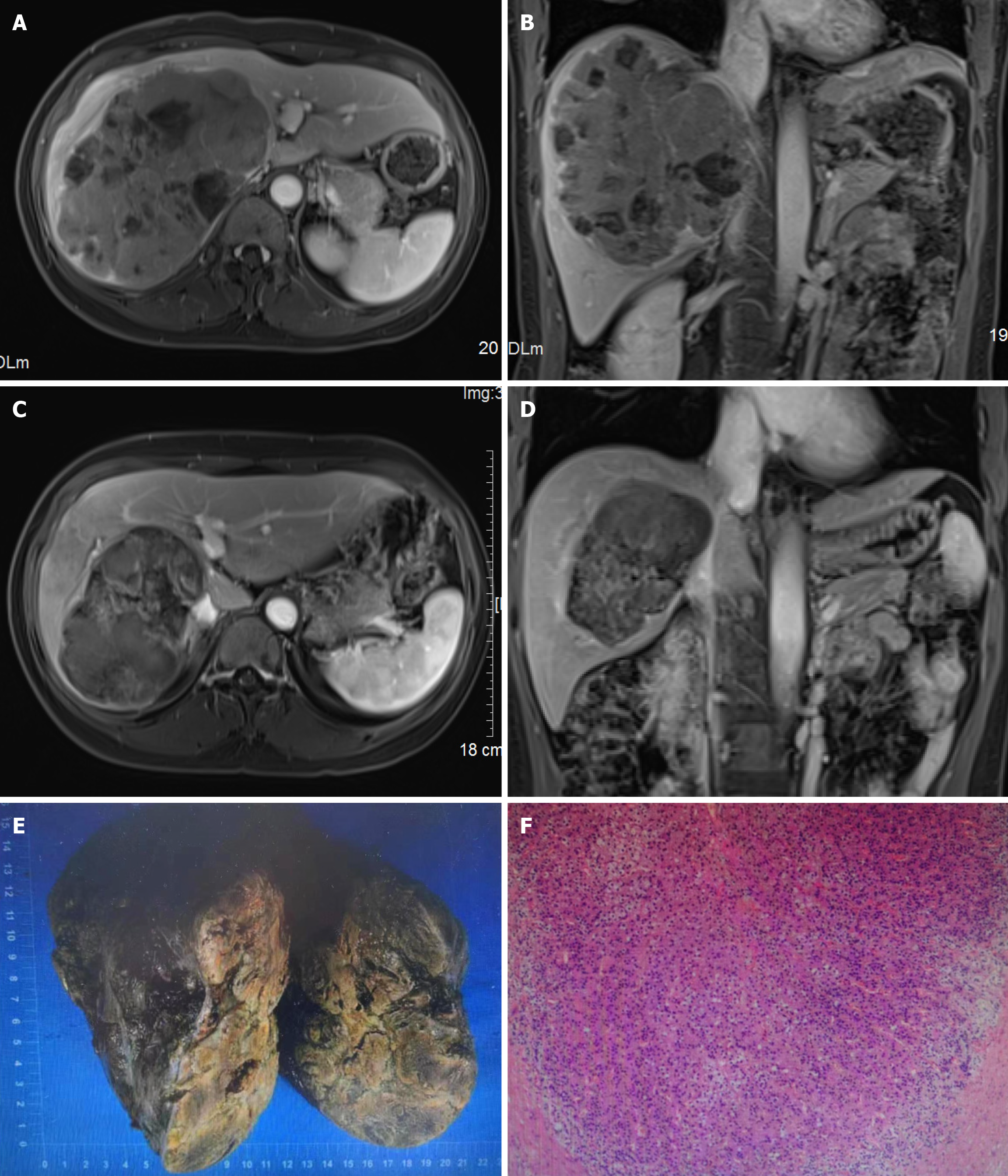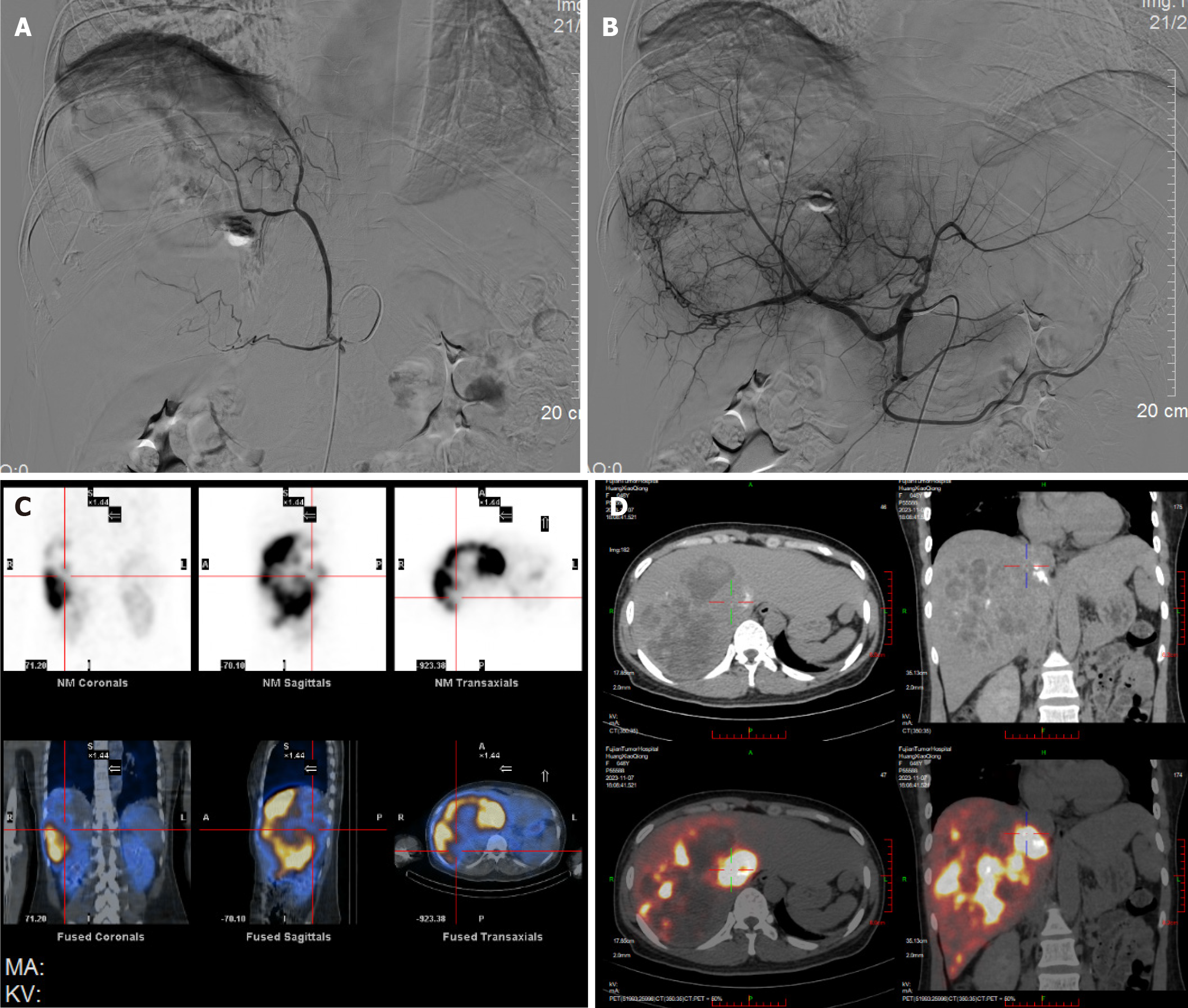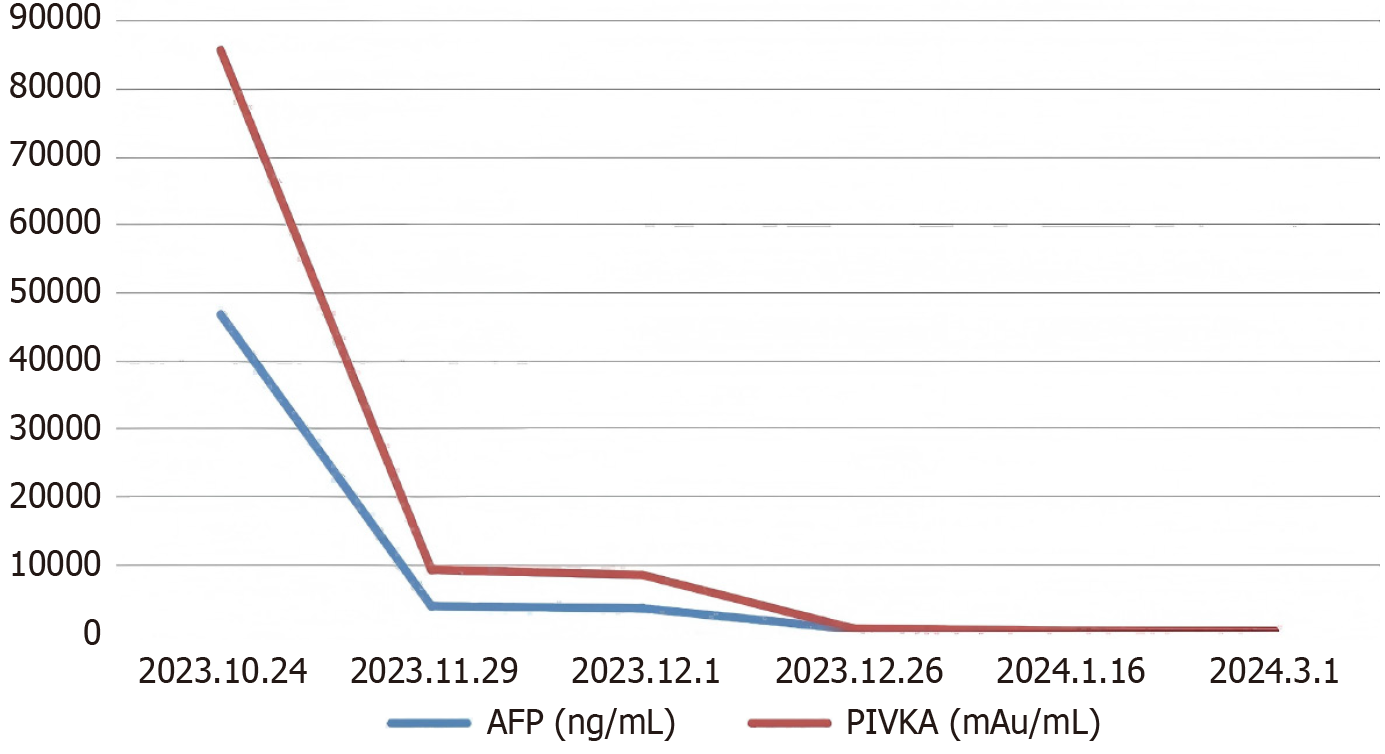Copyright
©The Author(s) 2025.
World J Gastrointest Oncol. Mar 15, 2025; 17(3): 100861
Published online Mar 15, 2025. doi: 10.4251/wjgo.v17.i3.100861
Published online Mar 15, 2025. doi: 10.4251/wjgo.v17.i3.100861
Figure 1 Imaging examinations.
A and B: Enhanced magnetic resonance imaging on 24 October 2023, showed the giant tumor in size of 15.8 cm × 11.4 cm × 14.8 cm, accompanied by the invasion of the right portal vein as well as right and middle hepatic veins; C and D: Enhanced magnetic resonance imaging on 28 February 2024, showed a tumor size of 11.6 cm × 7.7 cm × 10.1 cm, indicating a complete response according to mRECIST; E and F: The hepatic tissue size was 17 cm × 14 cm × 10 cm. Upon incision, a grayish yellow and grayish white mass with a size of 13.5 cm × 12 cm × 9.5 cm was observed as a nodular gray-white and grayish red mass with extensive necrosis.
Figure 2 Treatment.
A: The angiography revealed that the right diaphragmatic artery emitted an aberrant vessel, which was involved in some tumor blood supply; B: The angiography revealed that the main blood supply artery of the tumor came from the right hepatic artery; C: The lung shunting fraction was 12.68%, with a T/N of 4.28. The partition model revealed that the prescription activity was 3.8 GBq at a tumoral dose of 110 Gy; D: Single-photon emission computed tomography/computed tomography at 1 hour after selective internal radiation therapy showed that the right lobe of liver mass was covered with yttrium-90 resin microspheres. There is no significant shunt in the extrahepatic tissues within the field of vision. Multiple enlarged lymph nodes in the hepatic hilum and retroperitoneum. Right oblique fissure pleural calcification, slight chronic inflammation in both lungs, and slight pleural effusion in the right chest.
Figure 3 Serum alpha-fetoprotein and antagonist-II dropped to normal levels 4 months after selective internal radiation therapy.
AFP: Alpha-fetoprotein; PIVKA: Antagonist-II.
- Citation: Hao MZ, Lin HL, Hu YB, Chen QZ, Chen ZX, Qiu LB, Lin DY, Zhang H, Zheng DC, Fang ZT, Liu JF. Combination therapy strategy based on selective internal radiation therapy as conversion therapy for inoperable giant hepatocellular carcinoma: A case report. World J Gastrointest Oncol 2025; 17(3): 100861
- URL: https://www.wjgnet.com/1948-5204/full/v17/i3/100861.htm
- DOI: https://dx.doi.org/10.4251/wjgo.v17.i3.100861











